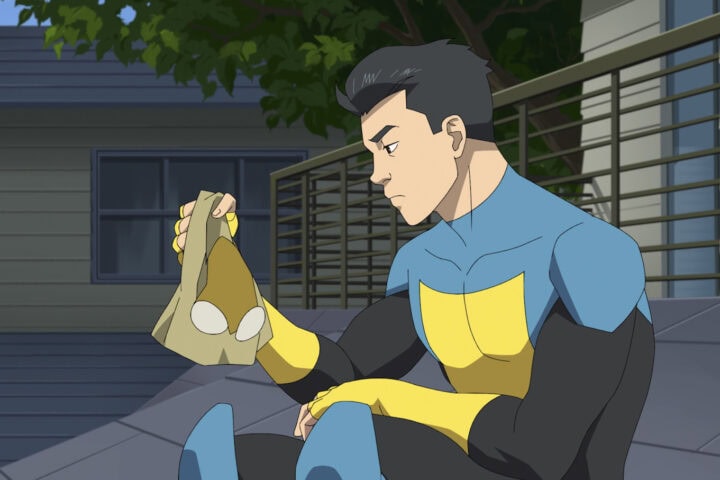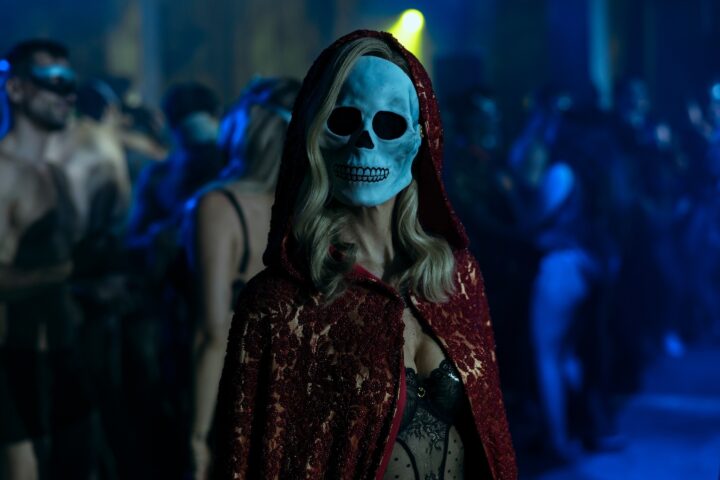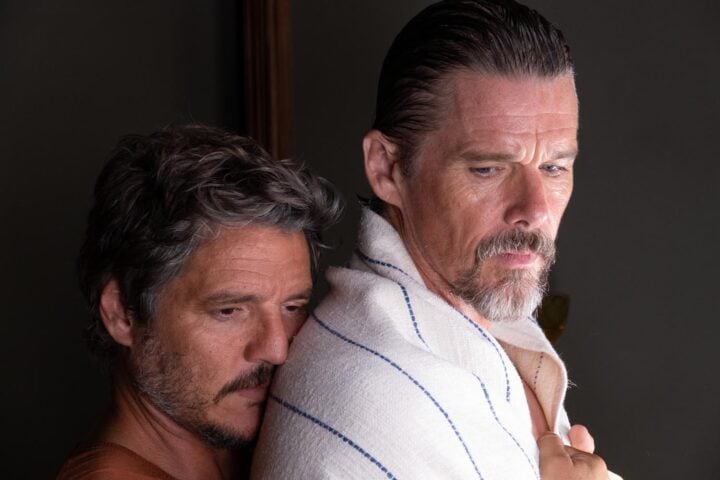When Batman: Mask of the Phantasm hit theaters on Christmas Day, 1993, it had been set up to fail. Warner Bros. initially ordered the film as a direct-to-video release in the wake of the massive commercial and critical success of the first season of Batman: The Animated Series. But the studio abruptly shifted course with a theatrical rollout without extending the production timeline or planning a marketing campaign, all while expanding the budget. Despite costing a mere $6 million, the film, released during a creative and commercial resurgence for DC’s dark superhero, couldn’t even recoup its budget at the box office.
And yet, what by rights could have ended up as a mere footnote in the long history of Batman media now stands three decades later as a beloved crystallization of the series that birthed it and, for many fans, a canonical adaptation. Much of this can be attributed to The Animated Series’s strong aesthetic and tonal foundation, which had struck an instant chord with its Art Deco designs, weighty ideas, and bold but comic-faithful characterizations.
Mask of the Phantasm’s inflated budget is mostly evident in its bookends: an opening camera crawl over a CGI-rendered Gotham cityscape, and the bombastic finale set in the abandoned World of the Future Fair (inspired by the 1964 New York World’s Fair). Otherwise, the film looks like an average episode of The Animated Series, yet the show had such a high quality in its own right that the material still looks ready for theatrical presentation.
The film leans hard into the show’s retro-future aesthetic and doubles down on its fondness for the hard-boiled 1940s detective era that birthed Batman in the first place. For most of the running time, the primary villains are thick-necked mafia henchmen and the reedier, more conniving bosses they serve. The vehicles all look like old Studebakers with wide, non-aerodynamic grilles and Space Race-era tailfins. The structuring of the story, which regularly flashes back from a position a few years into Bruce Wayne’s (Kevin Conroy) career as Batman to the beginnings of his vigilantism, is blatantly modeled on the layout of Citizen Kane.
Unlike the darker tone of contemporary Batman comics, both The Animated Series and Mask of the Phantasm stand out all the more for tackling serious ideas while remaining fundamentally tamed for a young audience. It’s significant that the driving angle of the film’s story is Bruce’s tumultuous romance with a fellow orphaned heiress, Andrea Beaumont (Dana Delany). In fact, just as much of the story belongs to her as Bruce, with many of the flashbacks gradually filling in her family’s unwitting connections and debts to the mob.
Andrea’s story does make it easy for anyone older than a young child to guess the identity of the Phantasm, a mysterious, Batman-like figure who begins taking a more lethal approach than the Caped Crusader to Gotham’s criminal underworld. But the story is less about the surprise of the villain’s alter ego than the contrast between two broken souls who never truly grew up.
A recurring theme in Batman stories is his suitability, or lack thereof, to a serious relationship, and that comes to the fore here when Bruce, kneeling at his parents’ grave, finds himself agonized by the possibility that he might break his vow to protect others because he is too committed to Andrea. “I never planned on being happy,” he sobs to an impassive gravestone. This emotionally fraught depiction of a man afraid to let go of his survivor’s guilt has aged far better as a sign of the franchise’s ability to tackle more adult ideas than the maimings and other ultra-violence that characterize so much other Batman material.
Compared to the grandiose, operatic tone that even the most grounded of the live-action adaptations of Batman take, Mask of the Phantasm remains true to the character’s street-level roots and spends most of its time on small-scale brawls and quiet melodrama. It actually comes as a shock when, after nearly an hour of Batman taking on gangsters, the Joker (Mark Hamill) shows up to wreak havoc. And sure enough, the Joker’s mere presence throws the film into chaos. The World of the Future Fair becomes his macabre lair, and Hamill’s volcanic performance, each line and laugh not so much delivered as flung out at maximum intensity, seemingly warps the properties of the world around the Joker, corrupting the sleek architecture of the film’s backdrops into something more lysergic and abstract.
The film’s animation also enhances the other actors’ vocal performance, nowhere more so than the late Conroy’s delicate balance of light and shade in delineating Bruce Wayne from Batman. As the former, Conroy speaks with an airy diffidence befitting a man who he knows his mouth can never write a check too big for him to cash. The design of Bruce matches this, as the character is portrayed with the barrel chest and swagger of a well-heeled fraternity brother.
As Batman, though, Conroy subtly modulates Bruce’s cockiness into a sterner kind of authority born of careful examination and self-confidence. Similarly, Batman looks both stocky and sleek, that broad chest implying raw muscle but the legs looking tapered and lithe, as if he’s equally capable of punching or sneaking his way through a given situation.
Conroy’s Batman can be truly scary, especially when the film casts his shadowy appearance in expressionistic terms that distort his shape into monstrous forms. But this Batman is one of the few outside of the comics who gives the indication that he wants to make a better world more than he wants to soothe his shattered psyche, maybe even find contentment. Mask of the Phantasm may not end with Bruce finding that happiness, but it does suggest that it isn’t out of reach, a goal far more reasonable and compelling than ridding the world of all crime.
Batman: Mask of the Phantasm is now available on 4K UHD.
Since 2001, we've brought you uncompromising, candid takes on the world of film, music, television, video games, theater, and more. Independently owned and operated publications like Slant have been hit hard in recent years, but we’re committed to keeping our content free and accessible—meaning no paywalls or fees.
If you like what we do, please consider subscribing to our Patreon or making a donation.





